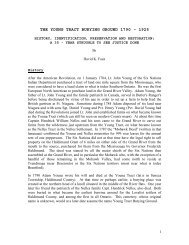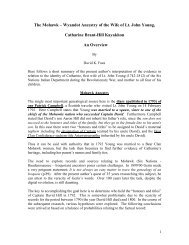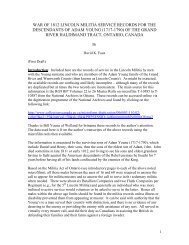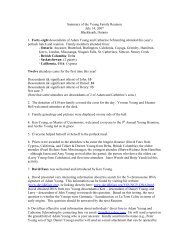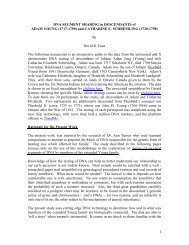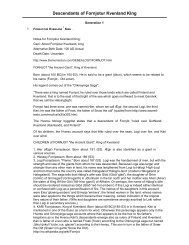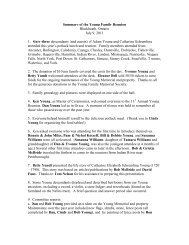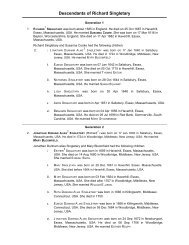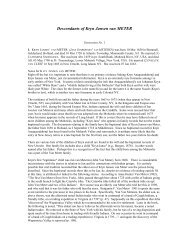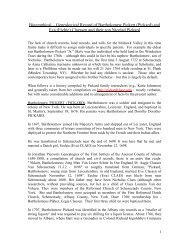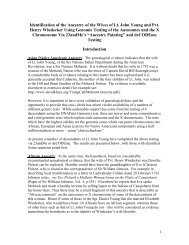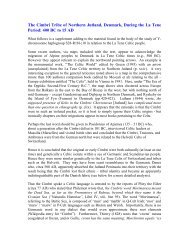Part 2 - Davidkfaux.org
Part 2 - Davidkfaux.org
Part 2 - Davidkfaux.org
Create successful ePaper yourself
Turn your PDF publications into a flip-book with our unique Google optimized e-Paper software.
have settled. In the haplogroup I category there is M223-I1b2a – Continental; alsoM253-I1a – Eastern European. Each likely originated in the Balkans and may have beenassociated with the adoption of agriculture, merging with the R-U152 western EuropeanPaleolithic or Mesolithic descendants. In addition, another group is M17-R1a1 – CentralEuropean. This particular variety likely came from the area of the Black Sea, perhaps asScythians. Each has YSTR haplotype marker repeat values that are characteristic to thecluster, and which serve to differentiate each from others with the same YSNPdesignator.In Conclusion - The Hallstatt peoples of Central Europe emerged from Urnfieldpredecessors and in turn the ancestors of the latter can be traced to Mesolithic times in theAlpine regions. The La Tene Celts followed after the Hallstatt shifts in centers of gravityof power and prestige to the west then to the north (e.g., Marne, Moeselle, Bohemia). Asthe 6 th gave way to the 5 th Century BC, a combination of overpopulation and a desire fornew and better lands, pushed the La Tene Celts in a primary south and eastwardexpansion. The result was that between 600 and 250 BC the La Tene peoples were foundscattered into Central Spain, and peppered in a band from the Bay of Biscay down intocentral Italy, across the entire Alpine region of France, Switzerland, Italy and southernGermany; and through Eastern Europe from southern Poland, through Hungary and intothe former Yugoslavia and Greece – as far as Anatolia. The movements were somewhatchaotic, and included expansions to the Jutland Peninsula and southern Norway, as wellas a return flow to occupy lands abandoned generations earlier and extending to the farsouthwest of France.There is an excellent body of historical sources via the Greco – Roman Classical writers,combined with extensive archaeological investigations, which profile the specifics ofthese migrations. The present paper presents a brief summary of the events noted aboveas well as tracing the antecedents and descendants of these people.The present work appears to be the first purporting to trace the La Tene people back toPaleolithic times; and to identify a Y-chromosome marker by which the descendants ofthe La Tene Celtic people can be recognized (largely within the territory occupied bytheir ancient ancestors). While there were doubtless other haplogroups linked to Hallstattand La Tene, it may be that only R-U152 is infallibly associated with this people. Thus itis proposed that anyone who tests U152 positive can be reasonably assured that his directmale line ancestor belonged to one of the tribes of the Hallstatt and La Tene Celts. Theone caveat relates to the individuals in Sardinia and perhaps along the Ligurian Coast ofItaly where U152 may be found at relatively high frequency, but there is nothing tosuggest that they would ever have been Celts – no matter how much the definition isstretched.Dr. David K. FauxSeal Beach, Californiafauxdk[ at ]yahoo.comVersion: 1 December 2008Copyright 2007-2008 (David K. Faux). All rights reserved.48



